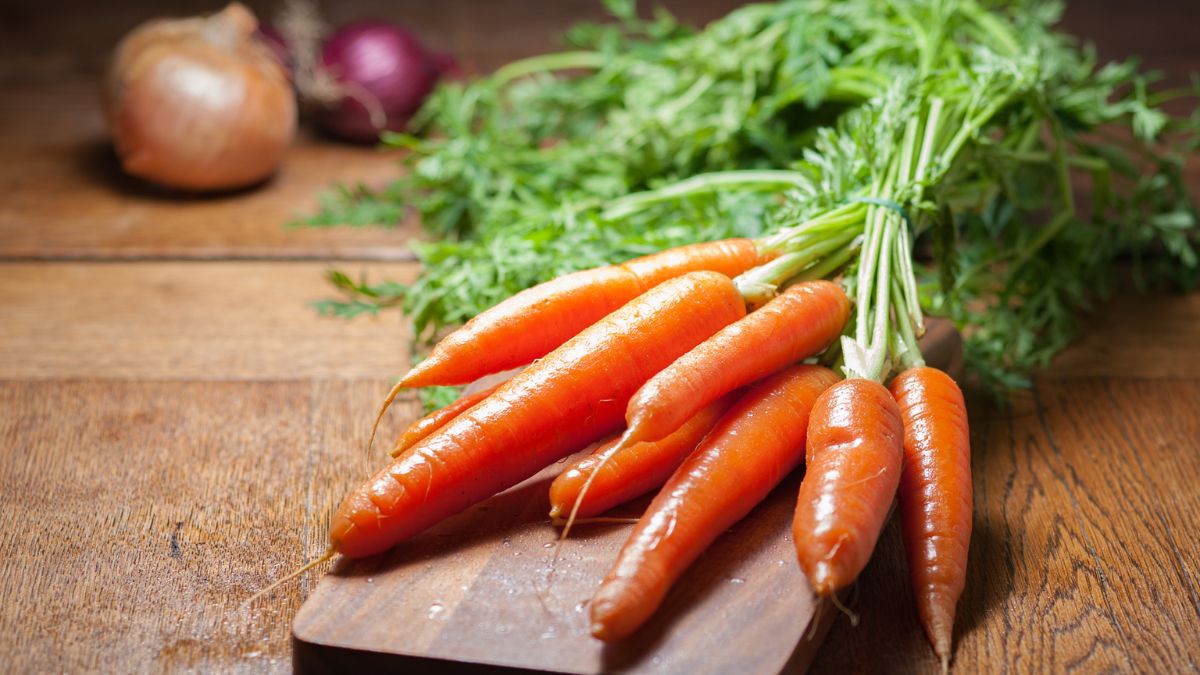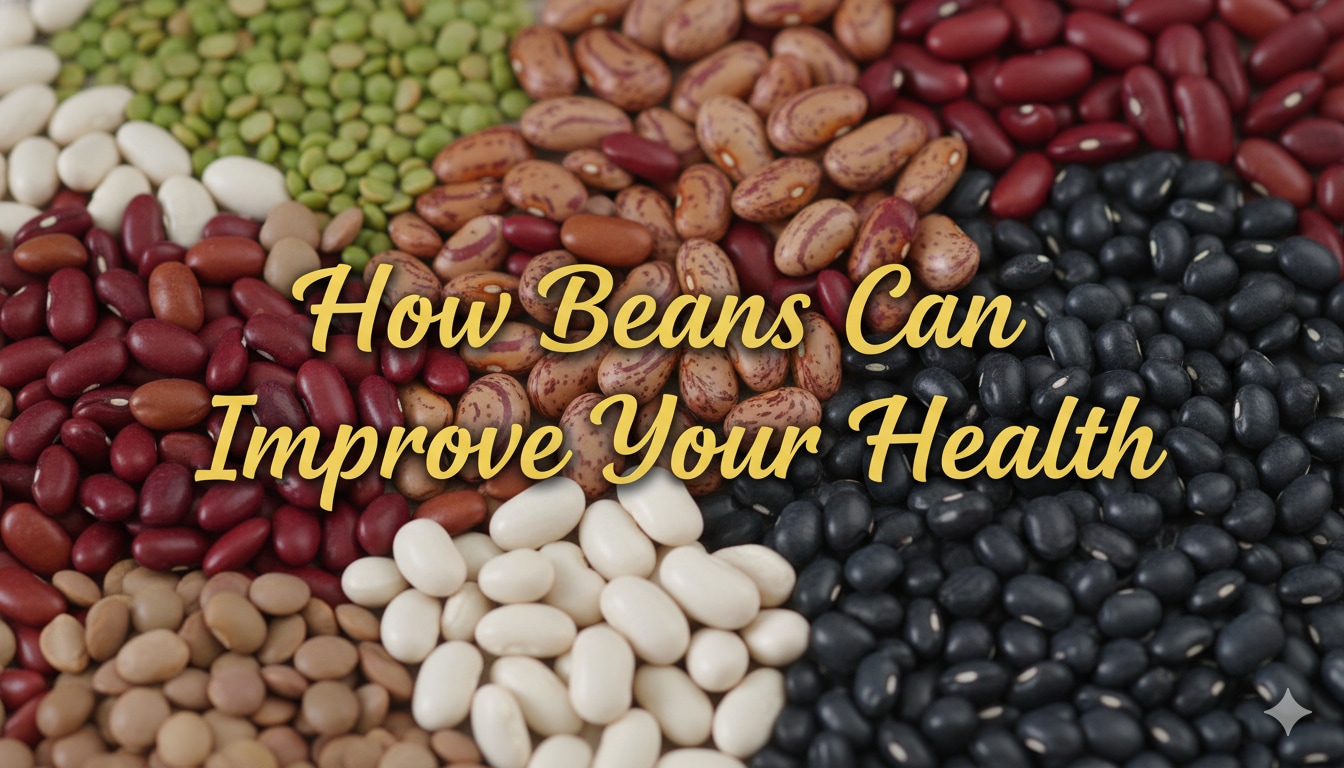Beans often sit quietly in our kitchens, treated like background ingredients or avoided because of their reputation for causing gas. Yet nutrition researchers and dietitians have been pointing to them with increasing conviction. These everyday legumes offer a level of nutrition that is surprisingly broad, from supporting gut bacteria to moderating blood sugar to helping with long-term heart health. They are affordable, adaptable, and strongly supported by science. Whether you want better digestion, improved satiety, or nutrient-packed meals that do not rely on expensive products, beans deliver more than people expect. This piece explains why beans deserve a regular place on your plate, how to include them without discomfort, and which recipes make them shine.
Also Read: What Happens When You Eat Khichdi Every Night For A Month
Before diving into the science, here is a quick snapshot of what beans can do for your body.

What Beans Do At A Glance
- Support gut bacteria
- Help moderate blood sugar
- Contribute to lowering LDL cholesterol
- Improve satiety and support weight goals
- Offer sustainable, affordable protein
- Provide fibre, antioxidants, potassium, and magnesium
Why Beans Are Nutritional Superstars

1. Gut Health Benefits
Beans carry resistant starch and soluble fibre, two components that travel through the small intestine unchanged. They begin to show their real value only when they reach the colon, where they ferment and feed beneficial gut bacteria such as Bifidobacteria. This fermentation produces short-chain fatty acids like butyrate, which help reduce inflammation, reinforce the gut lining, and may reduce colon cancer risks. Because gut health influences everything from immunity to metabolism, this makes beans an important tool for anyone focusing on long-term wellbeing.
2. Blood Sugar Support
The shift from gut function to blood sugar is natural because a balanced gut helps improve glucose response. Beans themselves have a low glycaemic index, and their blend of fibre and protein slows the release of glucose into the bloodstream. This prevents sharp spikes. Research shows that individuals with type 2 diabetes who include beans several times a week often see better long-term glycaemic control, including improved HbA1c results. For people looking for practical, sustainable ways to manage blood sugar, beans are one of the simplest options.
3. Heart Health Advantages
Blood sugar management is closely linked to cardiovascular health, which is why beans also benefit the heart. Their soluble fibre binds to cholesterol in the digestive tract and helps move it out of the body before it enters the bloodstream. Beans also contain natural amounts of potassium and magnesium, two minerals that support healthy blood pressure. Adding beans to your meals a few times a week can be a straightforward way to support cardiovascular function.
4. Support With Weight Management
Heart health connects easily to weight management because both involve hormonal responses and metabolic balance. Beans provide high levels of fibre and protein, which help increase fullness hormones while reducing hunger signals. This creates natural satiety and helps people feel satisfied for longer without needing additional calories. For anyone trying to maintain or lose weight without restrictive eating patterns, beans offer a practical path.
Expert Insight
According to Cleveland Clinic dietitians, “Beans are a triple threat: packed with protein, fibre, and antioxidants. They're one of the few foods that count as both a vegetable and a protein source”.
How To Add Beans To Your Diet Without Discomfort

Once you understand what beans can do for your body, the next step is learning how to add them comfortably. Many people avoid beans because of bloating or gas, but these effects are usually temporary as the gut adjusts. With gradual introduction and proper preparation, beans become much easier to digest.
The Soak and Spice Method
Soaking dried beans for 8 to 12 hours and discarding the water removes some of the compounds that lead to gas. Spices such as cumin, ginger, and asafoetida (hing) can support digestion during cooking. Using this method consistently helps your gut adapt more quickly.
Easy Integration Ideas
- Blend them: Add white beans to smoothies or soups for natural creaminess with a neutral taste.
- Swap grains: Replace white rice with lentils or mix beans into quinoa salads.
- Enhance meat dishes: Reduce minced meat in dishes like bolognese or tacos and replace the remainder with lentils or kidney beans.
- Snack smart: Roast chickpeas to create a crunchy, protein-rich alternative to crisps.
Also Read: This Gurugram Pizza Spot Catered At Netra Mantena And Vamsi Gadiraju's Royal Udaipur Wedding
How Much Beans Should You Eat

Because readers often ask how frequently to include beans, here is simple guidance.
- Three to four servings a week is realistic for most people
- One serving equals half a cup of cooked beans
- Rotating different beans improves gut diversity
Quick Table: What Each Benefit Means
| Benefit | Why It Matters | Component Responsible |
| Gut health | Supports microbiome, reduces inflammation | Resistant starch, soluble fibre |
| Blood sugar | Slower glucose release and steadier energy | Low GI, protein |
| Heart health | Lower LDL, supports blood pressure | Soluble fibre, potassium, magnesium |
| Weight balance | Longer satiety and reduced cravings | Protein, fibre |
This snapshot makes the entire science section easier to retain and improves scroll depth on mobile.
3 Bean Recipes To Transform Your Meals
Now that the key benefits and digestion tips are clear, it becomes natural to move into recipes. These dishes make it simple to apply everything above without needing complicated cooking techniques.
1. Mediterranean White Bean and Spinach Stew

Ingredients:
- 2 tins cannellini beans, drained and rinsed
- 1 onion, diced
- 3 cloves garlic, minced
- 400g tinned chopped tomatoes
- 200g fresh spinach
- 1 tsp dried oregano
- 1 tsp smoked paprika
- 2 tbsp olive oil
- Salt and pepper to taste
Method:
Sauté the onion in olive oil until translucent. Add garlic, oregano, and paprika and cook for 1 minute. Add tomatoes and beans. Simmer for 15 minutes until the mixture thickens. Stir in spinach until wilted. Season and serve with crusty bread.
Benefits: Rich in iron, vitamin C, and fibre.
2. Spicy Black Bean and Sweet Potato Tacos

Ingredients:
- 2 tins black beans, drained
- 2 large sweet potatoes, cubed and roasted
- 1 tsp cumin powder
- 1 tsp chilli powder
- Corn tortillas
- Avocado, lime, and coriander for topping
Method:
Mash half the black beans with cumin and chilli. Mix with the remaining beans and roasted sweet potatoes. Warm the mixture in a pan. Serve in tortillas topped with avocado slices and lime juice.
Benefits: Provides complete plant protein when paired with corn and delivers high potassium.
3. Lentil and Walnut Bolognese

Ingredients:
- 1 cup brown lentils (dried)
- 1/2 cup walnuts, finely chopped
- 1 onion, diced
- 2 carrots, diced
- 2 celery stalks, diced
- 500g tomato passata
- 1 tbsp balsamic vinegar
- Whole wheat pasta
Method:
Cook lentils until tender. Sauté onion, carrots, and celery until soft. Add walnuts, passata, and vinegar. Simmer for 20 minutes. Stir in cooked lentils. Serve over pasta.
Benefits: Combines omega-3 fats from walnuts with the fibre of lentils for heart support.
Also Read: How To Enjoy Ginger's Flavour Without Irritating Your Stomach
The Bottom Line
Beans might appear modest, but they offer meaningful nutritional value, budget friendliness, and strong scientific backing. They support gut bacteria, help regulate blood sugar, and contribute to heart health, all while being versatile enough to fit into everyday meals. From rajma and chole to lentil stews and tacos, beans make it easier to eat well without complicating your routine. Introduce them slowly, use the soak and spice method, and try recipes that genuinely appeal to you. Every serving supports your gut microbiome, your heart, and your long-term wellbeing in ways that often surprise people.










